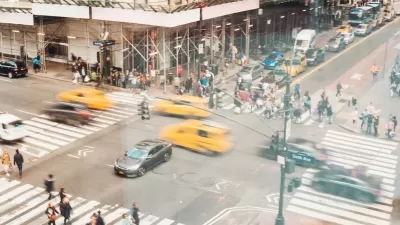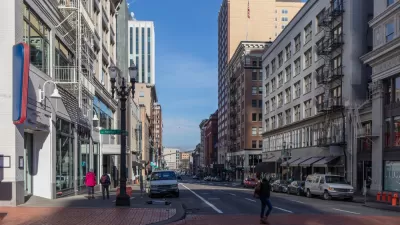The group is tasked with making a deeper assessment of the underlying infrastructural causes of fatal crashes and recommending improvements.

A recently formed Indianapolis city commission seeks to improve the way the city investigates fatal car crashes, reports David Zipper for Bloomberg CityLab. “The commission looks beyond police reports, identifying ways in which street adjustments might reduce the likelihood of another crash and then sharing its recommendations to city leaders as well as the general public.”
The Fatal Crash Review Commission will fill a gap where both local police forces and the National Transportation Safety Board (NTSB) often fall short. “Trained to assign individual blame, police officers may lack the skills or inclination to consider contributing factors like road design,” Zipper explains, while the NTSB focuses its investigations of car crashes on new technology and other precedent-setting situations rather than the thousands of deadly crashes that happen daily on U.S. roads.
As Zipper explains, “After the police complete their investigation, the commission looks for ways in which the built environment may have played a contributing role, considering possible fixes such as adding a pedestrian island or adjusting traffic light signals. Final recommendations are given to the mayor, city council, the chief of police, and the head of the department of public works (which manages roadways).”
The commission’s impact could be confined by its scope, which “is limited to roadway design; crash factors like vehicle features, public health, and law enforcement are outside its purview.” However, advocates hope it can provide a starting point for a deeper understanding of why crashes happen and how to prevent them.
FULL STORY: Indianapolis Gets Serious About Car Crash Investigations

Study: Maui’s Plan to Convert Vacation Rentals to Long-Term Housing Could Cause Nearly $1 Billion Economic Loss
The plan would reduce visitor accommodation by 25,% resulting in 1,900 jobs lost.

Placekeeping: Setting a New Precedent for City Planners
How a preservation-based approach to redevelopment and urban design can prevent displacement and honor legacy communities.

Using Old Oil and Gas Wells for Green Energy Storage
Penn State researchers have found that repurposing abandoned oil and gas wells for geothermal-assisted compressed-air energy storage can boost efficiency, reduce environmental risks, and support clean energy and job transitions.

Washington State Plans Ambitious ‘Cycle Highway’ Network
The state is directing funding to close gaps in its existing bike network and make long-distance trips more accessible.

Homeowners Blame PG&E for Delays in ADU Permits
The utility says it has dramatically reduced its backlog, but applicants say they still face months-long delays for approvals for new electrical work.

Rethinking Wildfire Defense: How a Landscape Approach Can Protect Neighborhoods
Post-fire analysis of the Eaton Fire reveals that a landscape approach — including fire-resistant vegetation, home hardening, and strategic planning — can help reduce wildfire risk, challenging assumptions that trees and plants are primary fire hazards.
Urban Design for Planners 1: Software Tools
This six-course series explores essential urban design concepts using open source software and equips planners with the tools they need to participate fully in the urban design process.
Planning for Universal Design
Learn the tools for implementing Universal Design in planning regulations.
Borough of Carlisle
Caltrans
Heyer Gruel & Associates PA
Institute for Housing and Urban Development Studies (IHS)
City of Grandview
Harvard GSD Executive Education
Salt Lake City
NYU Wagner Graduate School of Public Service
City of Cambridge, Maryland





























